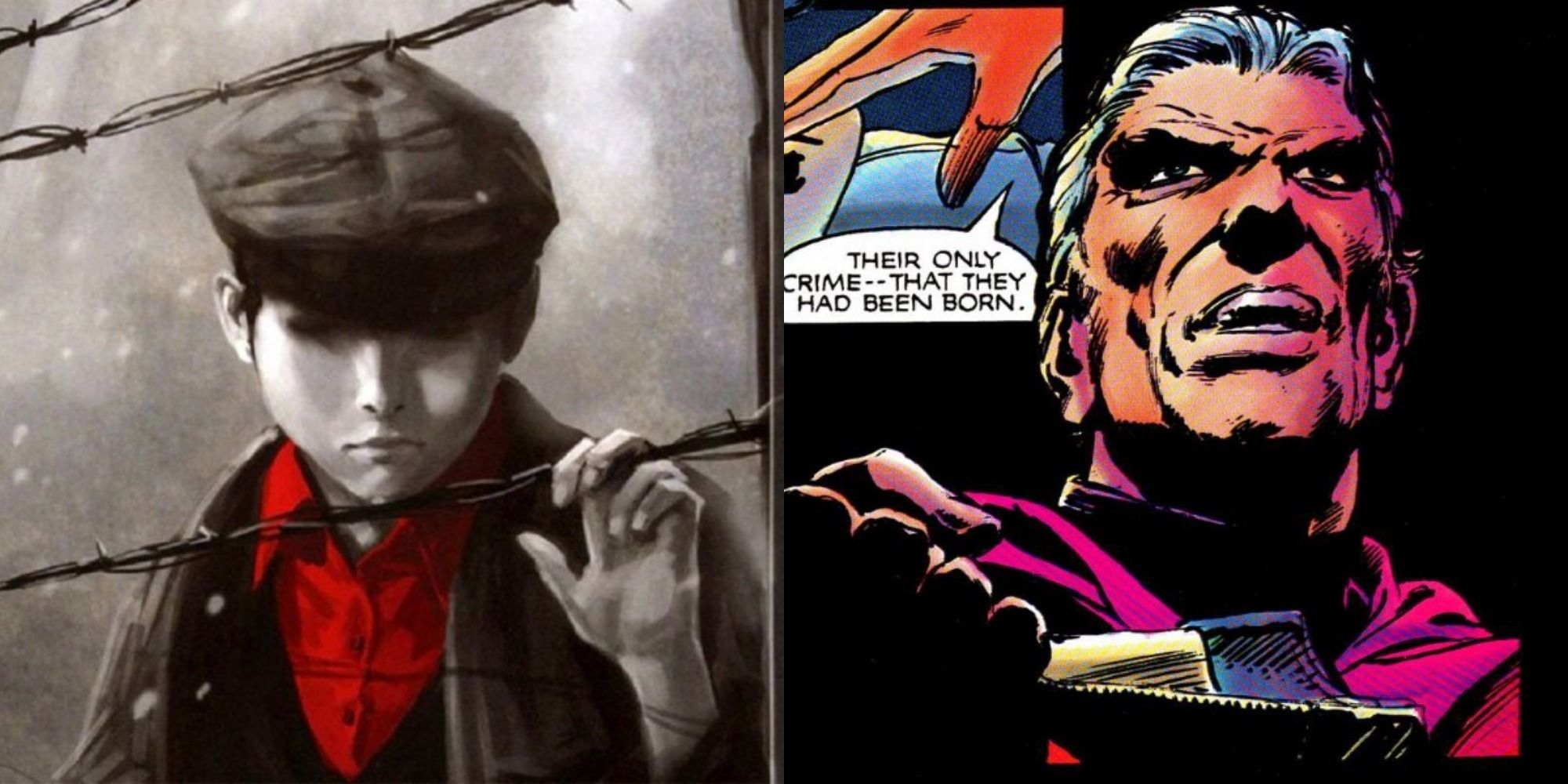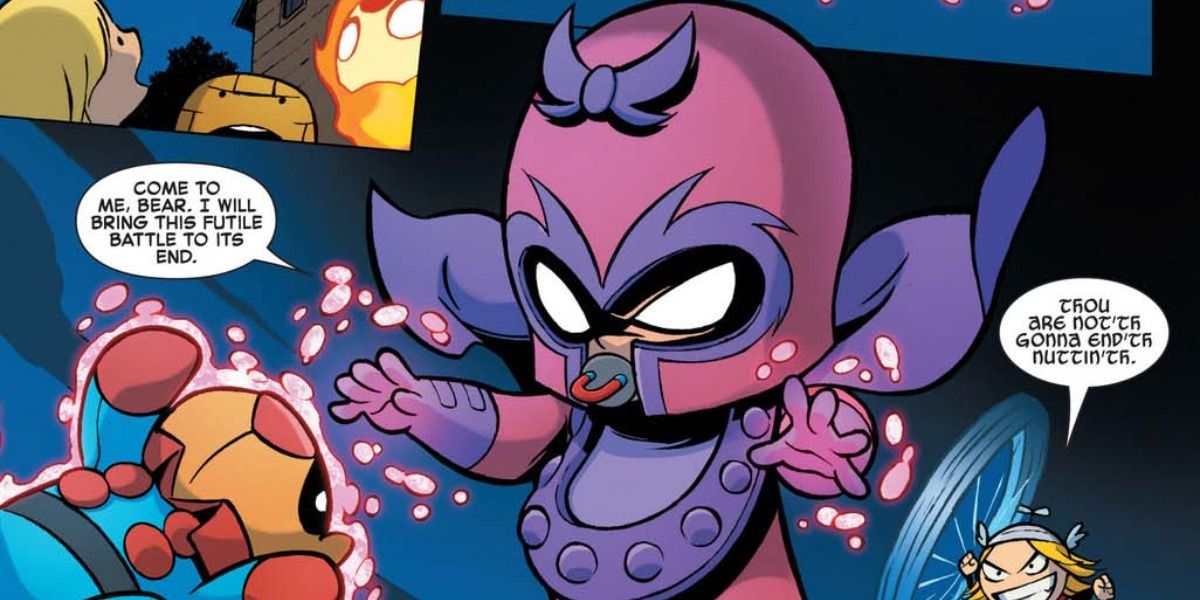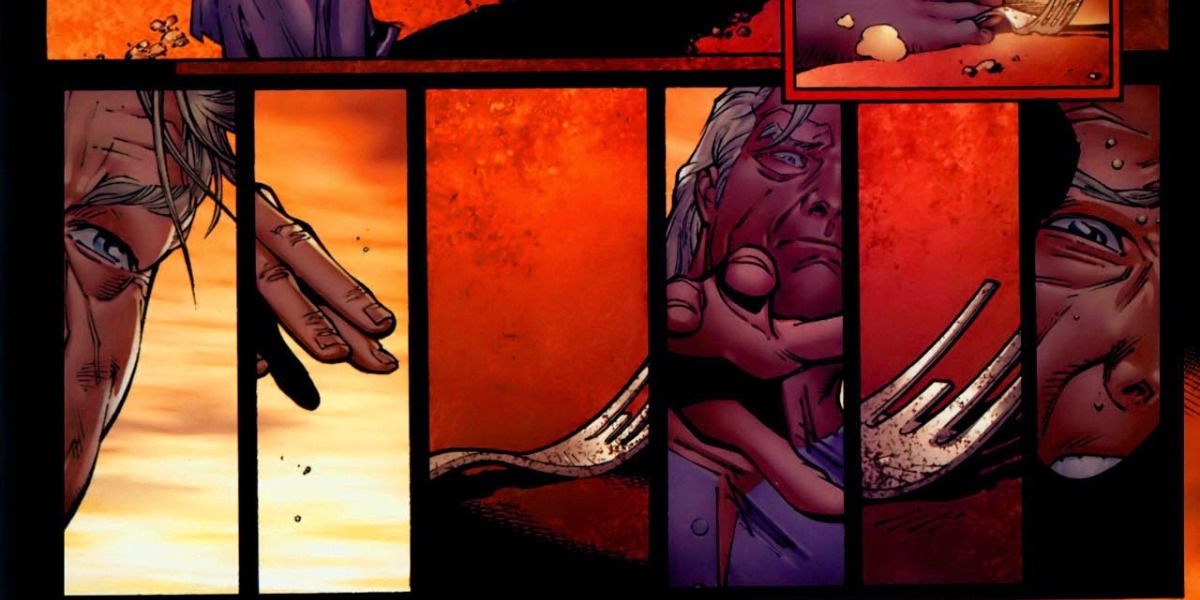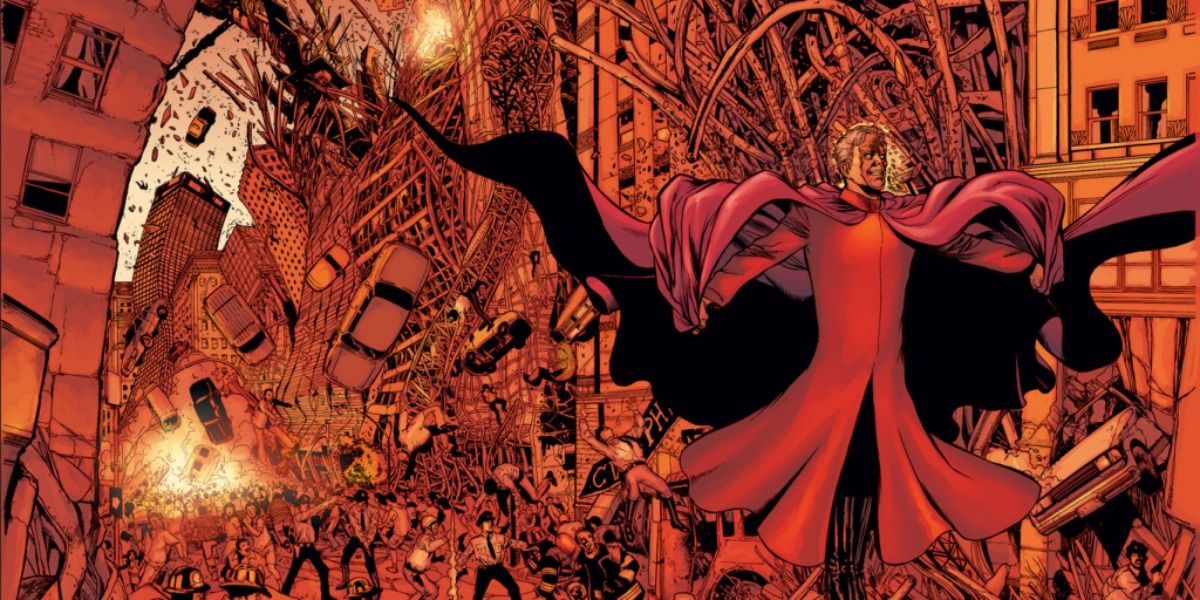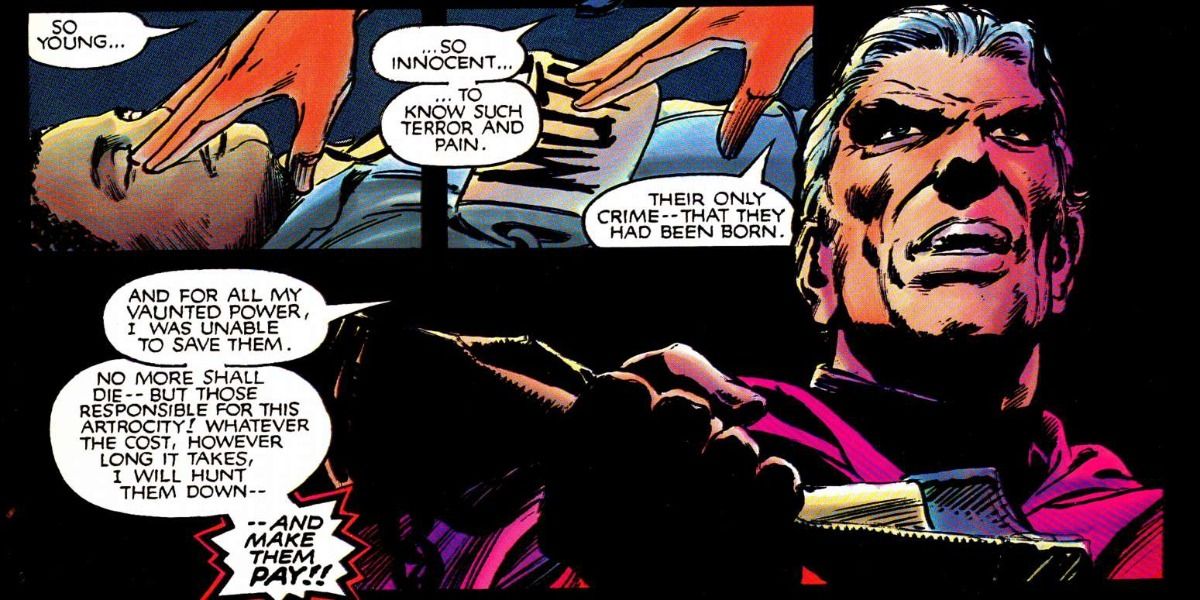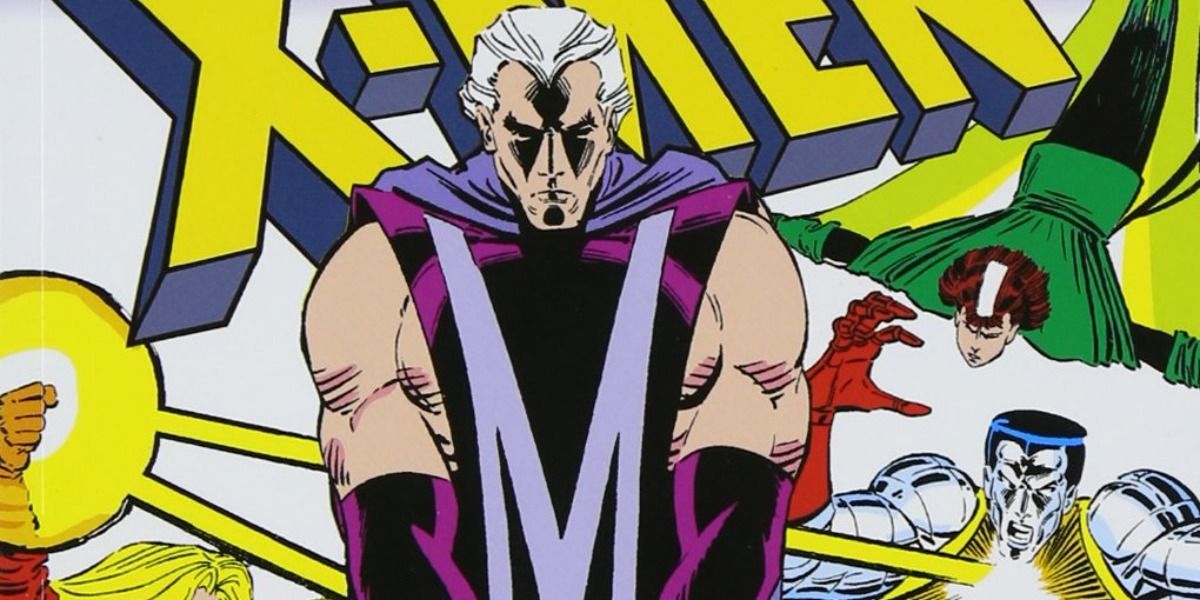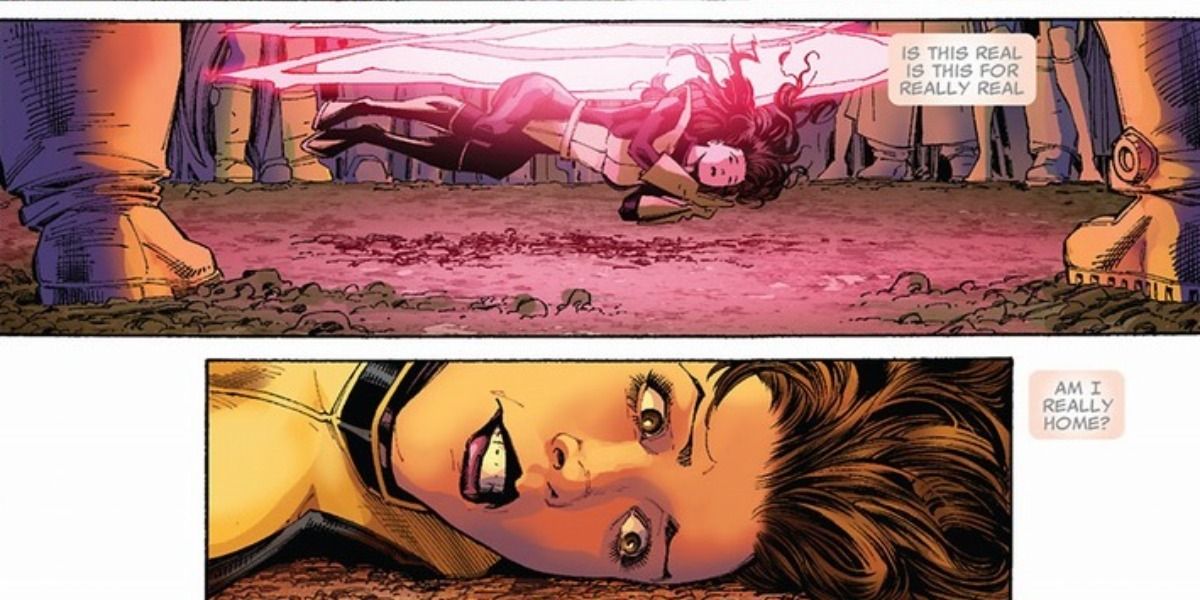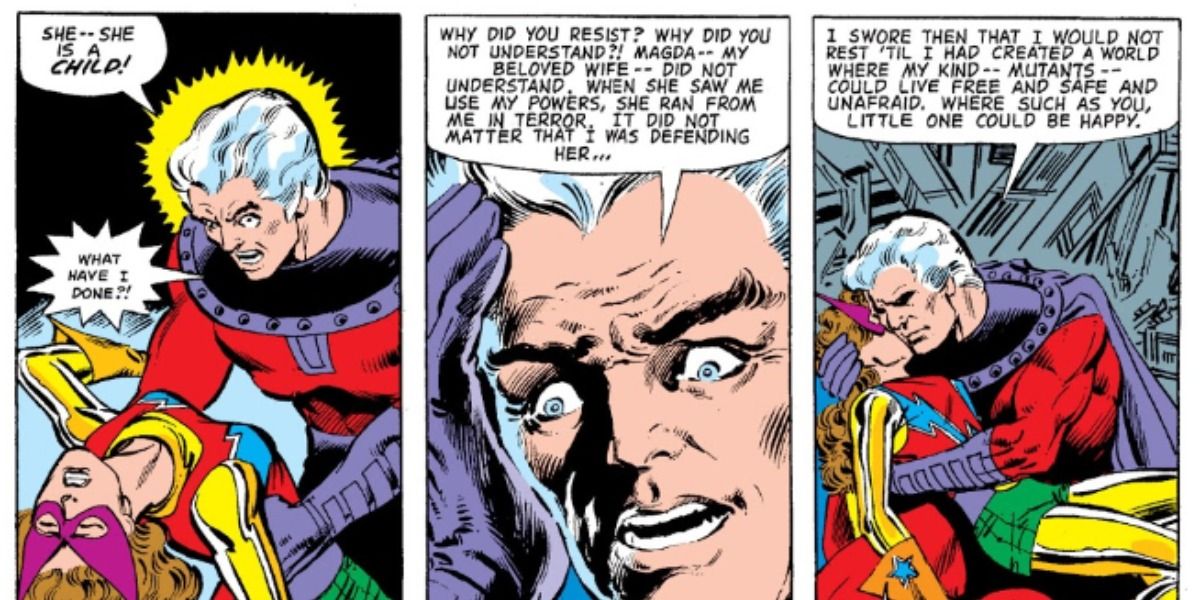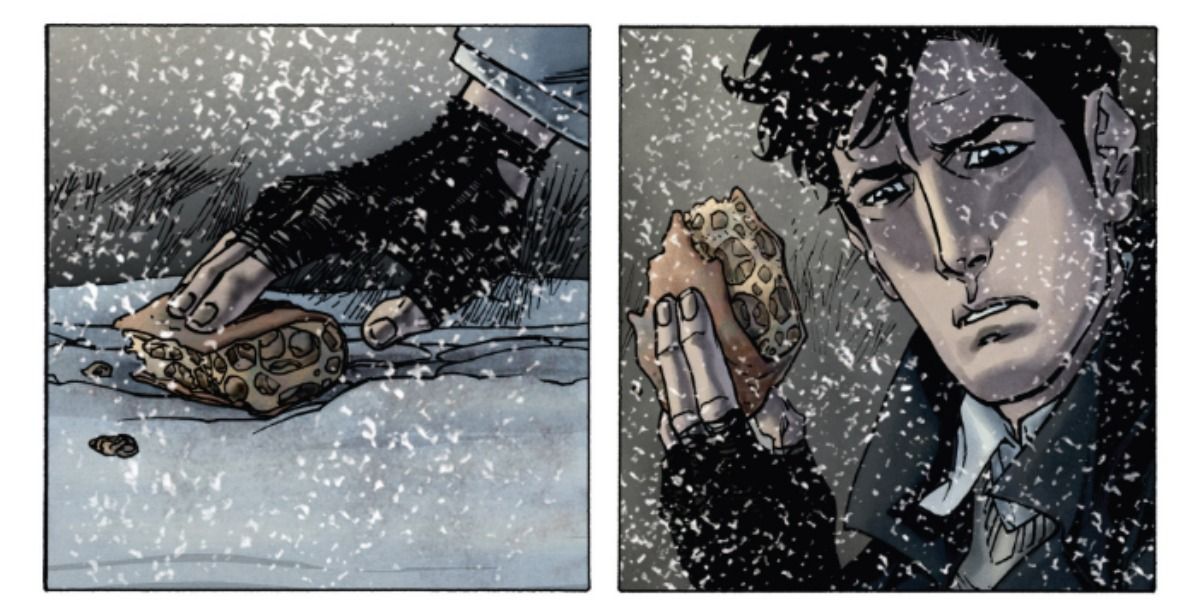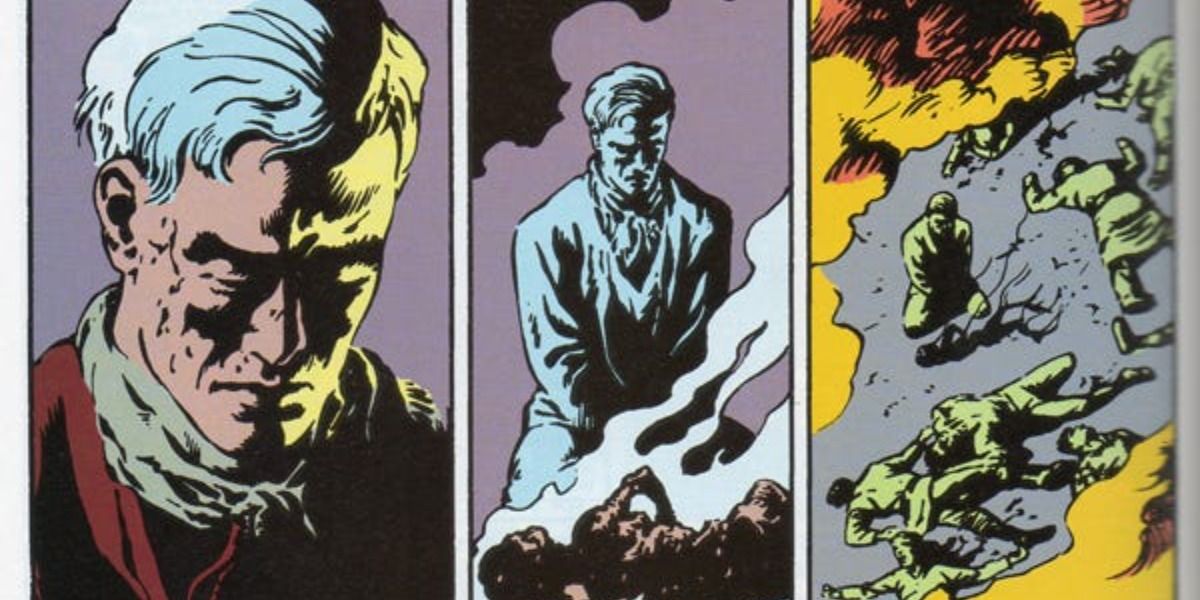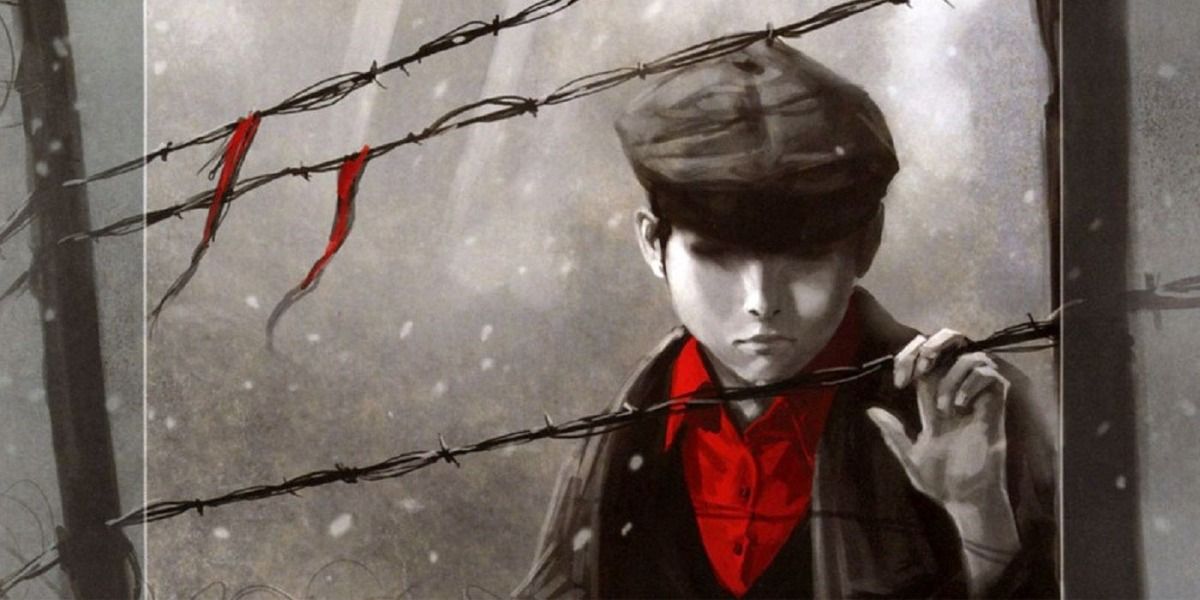Magneto is possibly the greatest Marvel villain ever, with his dastardly deeds being balanced by his sympathetic motivations and horrifying backstory. Though he debuted as a stereotypical bad guy, more and more layers began to be revealed as time went by, with Magneto becoming one of Marvel's most nuanced characters.
Quite a few times, either Magneto's vision for mutantkind or merely his ego will point him towards villainy, but even then he maintains a sympathetic edge. There are a lot of moments in the comics that make the reader either side with Magneto or at least somewhat understand his actions.
When He Was Turned Into A Baby
Magneto's early days were a strange time for him, as though he is far more complex nowadays, for a while he was merely a two-dimensional baddie. In Defenders #16 by Len Wein and Sal Buscema, Magneto and The Brotherhood were pitted against The Defenders in a plot that involved Magneto's creation, Alpha.
Alpha is a god-like mutant with the ability to warp reality, but though he initially fought them, The Defenders were able to convince him that they were the good guys. Alpha then doomed The Brotherhood to a fate worse than death when he turned them into infants.
When He Lost His Powers
Not every fan was sold on House of M, but Brian Michael Bendis and Olivier Coipel's story where Scarlet Witch rewrote reality so that everyone got what they truly wanted had a killer ending. After the heroes regained their memories and rebelled against her, a heartbroken Wanda responded by stripping the majority of the mutant race of their abilities with only three words..."No more mutants."
Though Magneto wasn't necessarily on the heroes' side in House of M, the wordless scene where a disheveled Magneto tries and fails to bend a fork on the ground is surprisingly moving. Though he'd soon regain his powers, the moment was highly effective.
Becoming Addicted To Kick
Grant Morrison's New X-Men run ushered the iconic team into the modern age, with their work providing a gateway for new readers. The reveal that new member Xorn was actually Magneto the whole time caught many readers off guard, but it was about to get worse.
Having become addicted to the mutant drug called Kick, Magneto began to unravel, which led to him accidentally murdering Jean Grey. Magneto then realized what he'd done and begged to be killed, not wishing for his message to be muddied by his actions. A rage-fueled Wolverine took him up on that offer.
God Loves, Man Kills
Chris Claremont deserves a lot of credit for putting X-Men on the map, as not only did he revolutionize the team, he gave their greatest nemesis a vast amount of depth. With art by Brent Anderson, "God Loves, Man Kills" is perhaps his greatest achievement, with the story seeing the X-Men teaming up with Magneto to stop Reverend William Stryker.
A story that is frighteningly relevant today, "God Loves, Man Kills" opens with a group of religious zealots known as The Purifiers coldly killing two mutant children under the warped belief that they are abominations in God's eyes. Magneto soon found them and vowed to make them pay, which led him down a path that saw him work alongside his longtime foes.
The Trial Of Magneto
Not long after the events of "God Loves, Man Kills," Magneto would end up joining the X-Men during a time when Cyclops was busy raising a child. Though he'd return to villainy with the passing of time, "The Trial of Magneto" by Chris Claremont and John Romita Jr. proves that The Master of Magnetism perhaps works better as a hero.
In the story, Magneto was put on trial for his crimes against humanity. Despite initially showing nothing but contempt for mankind, Magneto did his best to prove to everyone that he'd changed. The trial was attacked by Baron Strucker's son Fenris and Magneto then chose to save the prosecutor who wished to have him locked up.
Saving Kitty Pryde From A Planet-Sized Bullet
Uncanny X-Men #522, written by Matt Fraction and drawn by Whilce Portacio, saw Magneto commit to the X-Men full time by saving Kitty Pryde. In the final story of Joss Whedon and John Cassady's Astonishing X-Men run, Kitty used her phasing powers to enter a planet-sized bullet before causing it to phase through the planet.
Two years later, Magneto used his powers to pull the bullet back towards Earth and free Kitty from it. This action took Magneto out of action for a bit, but it managed to earn Magneto the trust of The X-Men.
When He Thought He'd Killed Kitty
Before Magneto saved Kitty's life, he seemingly ended it. In Uncanny X-Men #150, Chris Claremont began to plant the seeds of Magneto's tragic backstory. Accompanied by art by Dave Cockrum, the issue saw the X-Men attempt to intervene in Magneto's plan to wipe out all life on Earth if the world's governments wouldn't give him political control.
At the end of the issue, Magneto seemingly killed Kitty Pryde with a jolt of electricity. When he realized that he had just killed a child in cold blood, he was distraught, recounting his backstory and how he wished to create a world that someone like Kitty could thrive in, but now he had become no better than those he despises.
Returning A Scrap Of Food To Someone In Need
Written by Greg Pak with art by Carmine Di Giandomenico, X-Men: Magneto-Testament was a glimpse at the villain's days as a young Jewish boy in the infamous Nazi concentration camp known as Auschwitz. The story is not for the faint of heart, as it doesn't shy away from the horrors of The Holocaust.
At the end of the series, Magneto escaped from the concentration camp and started roaming around a nearby city, stumbling across a scrap of food. Upon seeing a man in need, Magneto chose to give him the food in an act of kindness.
Losing His Family
Magneto reunited with his great love Magda after they escaped from Auschwitz and they traveled to a Ukrainian city called Vinnytsia, where their daughter Anya was born. Sadly, in Classic X-Men #12 by Chris Claremont and John Bolton, an angry mob burned down their home when Magneto's powers were discovered, with Anya dying in the fire.
Sent into a furious, justified rage spurred by the mob preventing him from saving Anya, he used his powers to brutally murder the entire mob. This action horrified Magda, who left him on the spot, later giving birth to his children Quicksilver and Scarlet Witch in Wundagore Mountain.
Surviving The Holocaust
One of the biggest changes that Chris Claremont made to Magneto was giving him the backstory of being a survivor of The Holocaust. Though it was mostly stated in dialogue at first, later stories would show his life in Auschwitz, to the point that it became a key feature of the X-Men movies.
In Auschwitz, a young Magneto was tasked with disposing of the bodies of those who were killed in the gas chambers, one of the most horrifying jobs imaginable. Magneto's history as a Holocaust survivor is an intrinsic part of his character, as it serves to inform his view on humanity.

